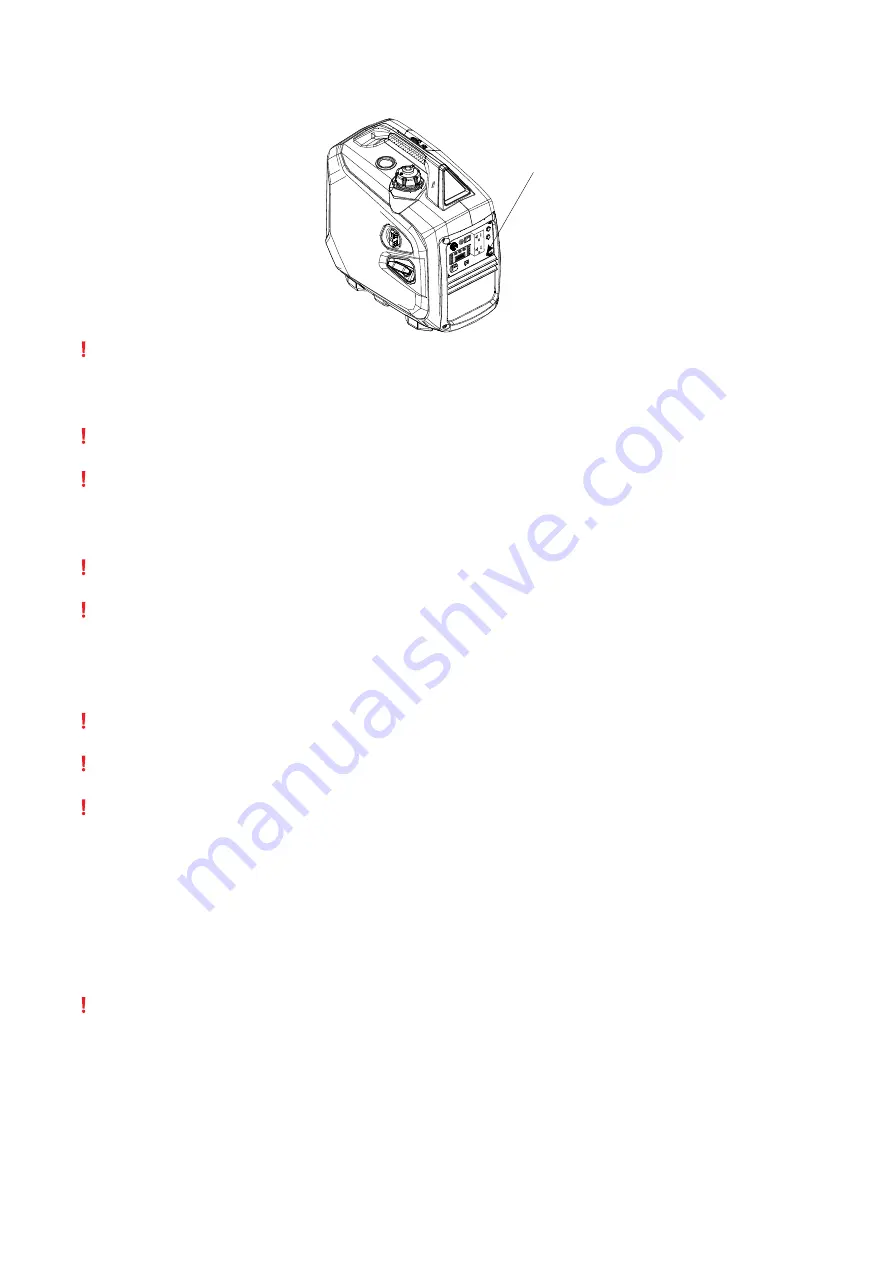
As a backup power source, this generator cannot be connected to the power company’s grid
system. This could cause electrocution and possibly death. Do not connect the generator to your
home power system.
Do not overload the generator.
Do not connect the generator to the power grid company’s household power system, or else it may
cause people to die from electric shock when they come into contact with the wires. This could also
damage the generator or your household appliances.
Do not attempt to lengthen the engine exhaust pipe.
For extension cords, use flexible cables such as rubber sleeves (compliant with IEC245 or
corresponding requirements). Cord length limit: the total length of a cord with a cross-sectional
area of 2.5 mm
2
should not exceed 196.85’ (60 m); for a cross-sectional area of 4.0 mm
2
, this
should not exceed 328.08’ (100 m).
Keep this generator away from other wires and cables, such as distribution networks.
You can use AC and DC power at the same time.
When using both the AC and DC sockets, make sure that the total power required does not exceed
the sum of the AC and DC power.
Using DC Power
The output voltage of the DC socket is 15-20 V. For 12 V batteries or other 12 V terminal products only.
WARNING:
When using the DC power supply, always keep the energy saving switch in the full speed (not
ECO) position.
Follow these steps to use the DC power supply on the generator.
1.
Use a charging cable and connect one end to the DC socket of the generator while connecting the
other end to the polar terminals of the battery.
11
Ground Protection








































